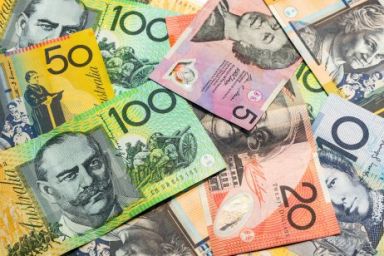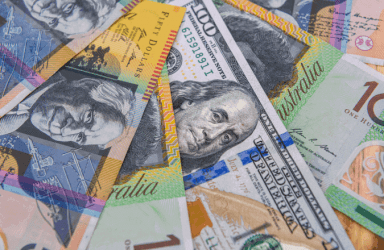AUD/USD
Trade Australian Dollar / US Dollar (AUD/USD) forex pair CFDs
Australian Dollar / US Dollar (ticker: AUD/USD) is a currency pair that shows how much one currency is worth relative to another. On Capital.com, you can trade it as a contract for difference (CFD), letting you speculate on exchange-rate movements without owning either currency. This means you can trade in either direction – rising or falling – depending on your outlook.*
Traders often track the Australian Dollar / US Dollar rate today to stay informed about short-term market movements.
*CFDs are traded on margin, and leverage amplifies both profits and losses.
Australian Dollar / US Dollar price today
The pair is quoted in $ and is currently trading around 0.67156.
Live price overview
Here’s an overview of the current Australian Dollar / US Dollar price and its recent trading ranges.
- Daily range: 0.66669 – 0.67156
- Daily movement: +0.00337 (+0.5045%)
- Weekly range: 0.66671 – 0.67268
- Monthly range: 0.66 – 0.67663
- Yearly range: 0.59142 – 0.67663
Why trade forex CFDs on the price of Australian Dollar / US Dollar with Capital.com?
Capital.com provides tools designed to support clear analysis and informed trading in the FX market.
Advanced charting and analysis
Use interactive tools to study the Australian Dollar / US Dollar price chart in detail.
- Access 100+ technical indicators
- Choose from 12 chart types
- Analyse fast, intuitive charts powered by industry-leading tools
Wide market offering
Join over 798,000 global traders and explore:
- 4,000 stock CFDs
- 60 commodity CFDs
- 30 index CFDs
- 120 forex pairs
User-rated platforms
- TradingView rating: 4.8
- App Store rating: 4.7
- Google Play rating: 4.6
- Trustpilot score: 4.6
What influences the price of Australian Dollar / US Dollar?
The Australian Dollar / US Dollar (AUD/USD) forex pair price can be influenced by a range of market factors, including:
- Interest rate expectations and central bank decisions
- Inflation and economic data releases
- Political or geopolitical developments
- Market sentiment and risk appetite
- Trade flows and economic performance of the related economies
Australian Dollar / US Dollar forecasts
Australian Dollar / US Dollar forecasts commonly reference recent news, company updates, and broader market trends rather than fixed price targets. Some traders combine technical analysis with fundamental insights to form their expectations.*
Instead of relying on a single forecast, many traders monitor ongoing analysis and real-time data to adapt to changing market conditions.
*Analyst forecasts are often inaccurate. Past performance isn’t a reliable indicator of future results.
How to trade Australian Dollar / US Dollar forex CFDs
Trading forex CFDs involves speculating on movements between two currencies:
- Go long (buy) if you think the base currency may appreciate
- Go short (sell) if you think it may weaken
Leverage allows greater exposure with a smaller deposit, but magnifies losses.
Risks of trading forex CFDs
Key risks include:
- Market volatility
- Leveraged losses
- Overnight funding costs
- No ownership of the underlying currencies
Latest currencies articles

